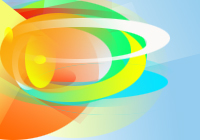Tension
headaches, also known as muscle-contraction headaches, are
characterized by dull, constant pain, often on both sides
of the head. A tension headache is often likened to the
sensation of a tight band or vise squeezing the head. The
pain is usually mild to moderate, and not incapacitating,
and may be accompanied by tightness in the neck and shoulders.
These headaches can last between four hours and a week.
Tension
headaches are classified into two categories:
Episodic
headaches
Chronic (daily) headaches
Migraine
headaches are signaled by intense throbbing pain, which
is usually one-sided, near an eye, and of moderate to severe
intensity. The headaches, which can be disabling, can last
up to 72 hours. Nausea and vomiting, sensitivity to light
and sound, dizziness, and blurred vision often come with
a migraine.
About
40% of migraine sufferers also experience an aura--in other
words, warning signs such as flashing lights or dots--to
signal an attack is coming.
Cluster
headaches produce severe, sharp, stabbing pain, usually
on one side of the head and centered around one eye. They
are severely incapacitating. These headaches tend to occur
in clusters of 1-4 a day for 4-8 weeks, last between 30
and 90 minutes each, and then disappear for months. Flushing
of the face, tearing of the affected eye, and a stuffy or
runny nose on the same side where the pain is located may
occur during an attack. Cluster headaches are most frequent
in the spring and fall.




